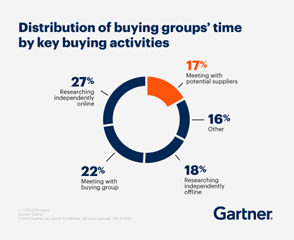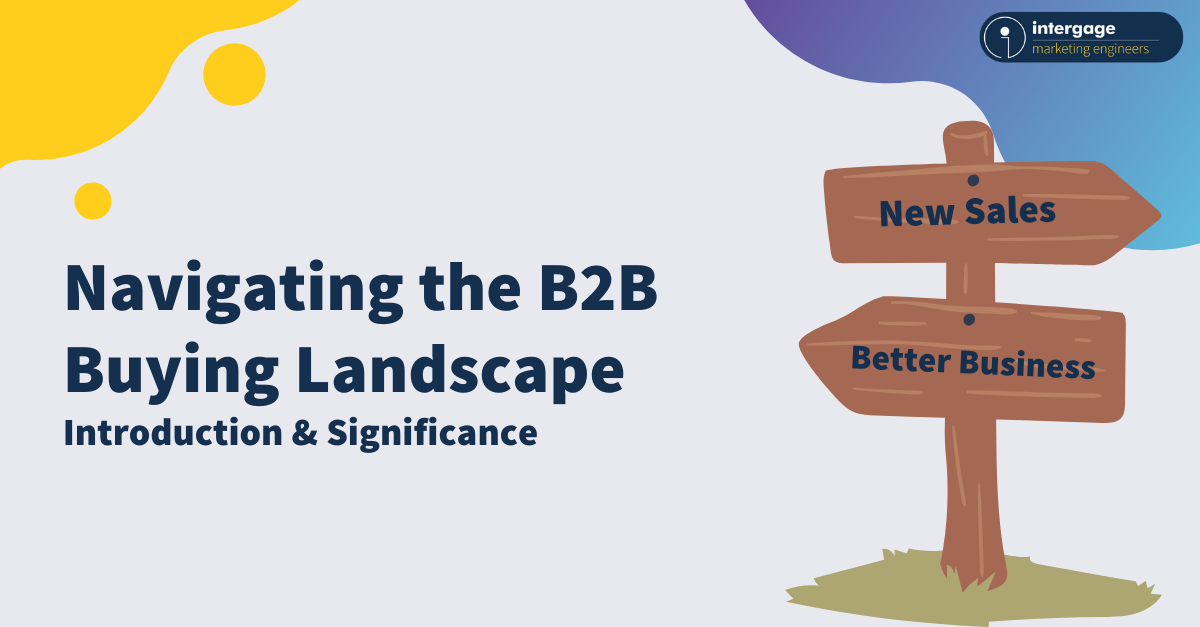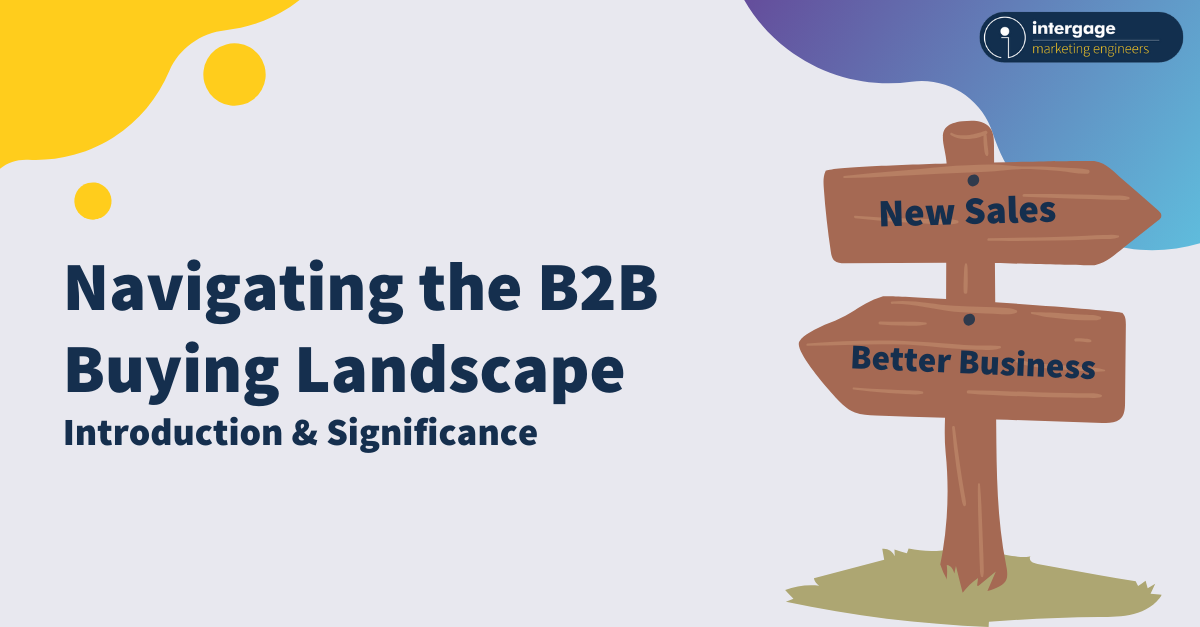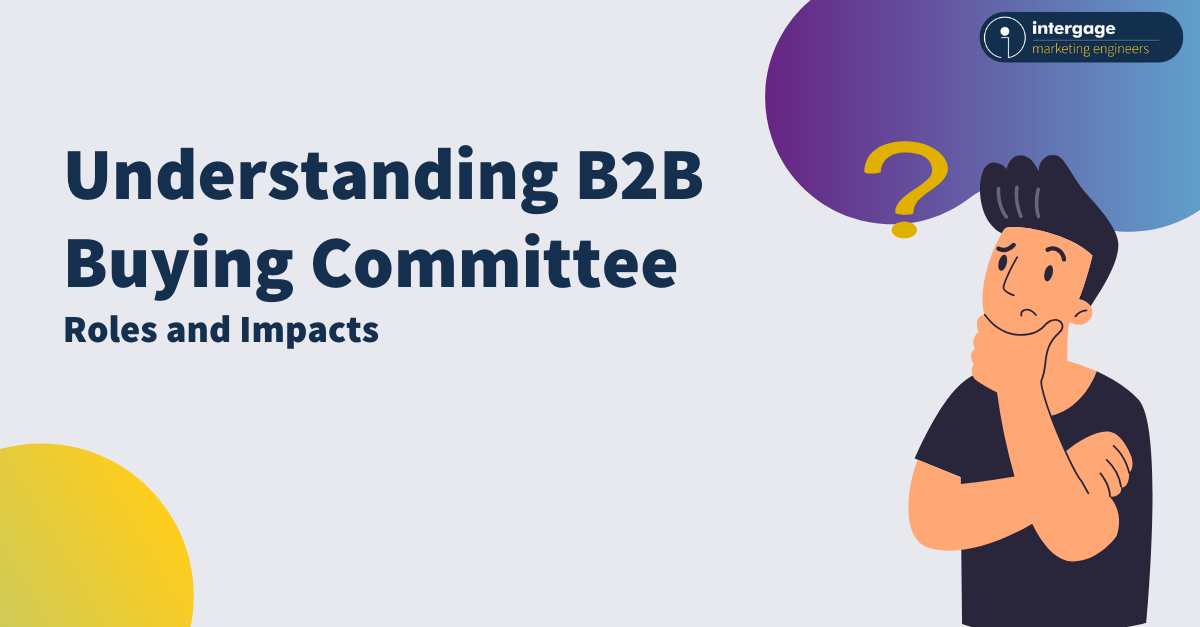Why Successful Industrial Sales Teams Put Digital Marketing At The Core
Back in 1988 I was a 22-year-old sales noob. My life was cold calling, brochures and a stratospheric company car mileage. I had a bulky ‘portable’ computer but no mobile (I should have been so lucky).
Kylie topped the charts…Rain Man got the Oscar for best picture…and in a world of big-shouldered flecked suits and red braces, I became trusted by customers as the useful guy who kept his promises.
Significantly, the internet – as we know it today – did not exist. Just a few largely private networks such as JANET (joint academic network), ARPANET then DARPANET (secret defence stuff).
So potential customers relied heavily on trade magazines and sales reps like me for their information.
Back then a knowledgeable salesperson held a strong position. They would often be valued by customers as the go-to source for product information and competitive intelligence.
How The Internet Changed Things For B2B Salespeople
Much has changed since 1988. The internet has evolved from a mere platform for sport, news and gambling into a global marketplace for professionals – and the balance between industrial buyer and seller has changed enormously.
Industrial buyers and decision-makers no longer rely on salespeople as their primary source of product and services information.
Cold-calling still has a place but it has become increasingly difficult because buyers have become ever-more resistant to unsolicited approaches from salespeople. They feel less need than ever to engage with sales reps – because they already have a wealth of information at their fingertips.
They can identify and shortlist of suppliers, share information with colleagues and select products and services at their own pace, largely without the need to speak to a salesperson.
And aside from technological advances, there are generational factors at play too.
A new generation of decision-makers has grown up in a connected, digital world. These individuals rely less on long-standing business relationships: they have access to information whenever they want it and so are more open to new supplier options.
B2B buyers spent as little as 17% of their buying journey meeting with potential suppliers during 2019, according to the Industrial Sector Survey by business intelligence analysts Gartner. And the Covid-19 pandemic has further decreased buyers’ personal interactions with sellers.

What are the downsides for professional salespeople? Buyers can easily find other companies that supply similar products. Buyers can quickly compare suppliers on price, service and product availability. Good news has always travelled fast…and now bad news travels at light speed!
So if your company is perceived as offering less than stellar quality and service, there is nowhere to hide.
There are also challenges associated with information overload. As a business, how can you stand out from the competition? Ultimately, relationships and trust still matter, but if you’re unable to catch someone’s attention and spend time in their presence then how can you demonstrate your expertise and authority? How can you be a trusted adviser and a reliable source of intelligence?
What Can You Do To Capitalise On These Changes?
The great news is that digital marketing – when implemented correctly – will allow organisations and their salespeople to become more effective and on a much bigger scale than ever before. The internet gives digitally savvy salespeople the opportunity to research their markets in detail and target company decision-makers precisely.
Once you have identified ‘good-fit’ targets, you can attract them to your business by sending them timely, relevant and insightful information that speaks to their professional challenges. Digital marketing can make your business truly magnetic to the customers you want to attract.
With 78% of B2B buyers starting their decision-making journey with a Google search, it is critical that your company is visible when buyers are looking for solutions.
Your business needs to engage effectively and nurture relationships with these good-fit prospects throughout the entire buyer’s journey. The most successful industrial businesses are producing relevant, personalised content to attract these good-fit prospects. This process is referred to as Inbound Marketing.
Use Inbound Marketing To Close More Deals
Even the best suppliers with the most attractive propositions will lose an average of around 25% of the deals in their pipelines towards the end of the sales process.
These opportunities are perhaps lost to the competition, or because the buyers’ circumstances have changed and budget is no longer available. This challenge has faced salespeople since the dawn of commerce.
However, it’s also worth remembering that you will definitely ‘lose’ 100% of the opportunities that you never got to hear about in the first place.
Just think about how much money is going to the competition simply because your company doesn’t show up when the buyer first starts looking for solutions to their problem!
The most successful companies and their salespeople are using digital approaches such as Inbound Marketing – coupled with amazing cloud-based tools – to generate relevant sales leads, shorten sales cycles and close more deals.
Once you understand WHY your company’s business approach, products and services make a difference to good-fit customers – and how your target buyers find information and make decisions – you can create engaging content and use digital tools to really change the game for your business.
Driving Traffic To Your Website
It’s not just about Google (as important as it is). The most successful companies are driving relevant traffic to their websites via content marketing on other platforms such as LinkedIn. They target prospects with highly tailored messages and advertising that attracts and intrigues.
Content optimised for search engines also helps these sites to show up when B2B buyers are searching for information to help them solve problems.
Leading automotive components manufacturer MAT Foundry Group has been working with our team here at Intergage for several years. Thought leadership content blogging on its website has created more than 106,000 article views and a 351% increase in organic search traffic over the past two years! Find out more here.
When a potential customer does land on a website, they need to know within one or two seconds that they’ve landed in the right place and – within a further few seconds – understand how this business has helped other professionals just like them.
Buyer-centric case studies that demonstrate how the supplier has helped customers provide vital ‘social proof’.
And regular production of educational, thought leadership content further demonstrates that suppliers understand their customers and have relevant experience.
These things build trust – just like back in the day, when I would be calling regularly on prospects, providing information, discussing their challenges and suggesting potential solutions.
From Sales and Marketing To Smarketing
The most successful B2B companies have well-aligned sales and marketing teams that understand each other’s contribution to business growth.
They have a common understanding of buyers and the sales journey – and also of their own business objectives. The most successful organisations make sure that people AND systems are joined up..png?width=1200&name=Blog%20Social%20Posts%20(8).png)
For example, it is great to have a good number of relevant prospects hitting your website. But if you don’t know who they are…or why they are visiting you…and it’s difficult for them to make contact with you…then it’s a waste of time and money bringing them to your site.
Ask yourself some questions:
- Does your sales team know when prospects and customers are visiting your website?
- Does your current website provide you with this visibility and can you see what they are looking at?
If not, then once again you are missing out!
It’s really powerful to be able to identify which content site visitors are looking at, and how often they are doing so, as these are often buying signals.
It doesn’t always mean that a potential customer is ready to buy immediately, but if knowing this means you’re able to send them some further (personalised) content, then you have a chance to step ahead of your competitors.
Harnessing Buyer Behaviour Intelligence
If you recently had a phone conversation with a prospect, how useful would it be to know that – after this conversation – they began actively researching your products on your website?
Further down the line – when you’ve sent the prospect a proposal or responded to an RFQ – imagine how useful it would be to know that they’ve reviewed your offer…and are doing further research on your site. There’s no better time to reach out to them!
This integrated digital sales and marketing approach can really change the game.
Hygiene control equipment manufacturer DDC Dolphin implemented inbound marketing around four years ago – and last year alone saw a 60% increase in organic search to its website.
An integrated digital sales and marketing approach has helped DDC Dolphin to improve deal win rates significantly. Read more here!
B2B Selling During A Global Pandemic
Until March 2020 I would have regularly spent two or three days each week travelling to business events across the South coast, speaking at conferences and visiting prospective customers. This came with all the associated expenses and was time-consuming.
Covid-19 lockdowns have changed all that. I have worked largely from my home office for the past year.
During the early weeks of the first lockdown, I continued to hit the phone to reach prospects. But I found that many of these contacts – typically managing directors, marketing directors and sales/business development directors – were hard to reach.
In most cases, they were working away from their offices and factories and I did not have their personal or mobile phone numbers.
Things were looking very challenging for me as the person leading new business development at Intergage. As a business, we had a choice. Should we do nothing, pull up the drawbridge and hope our business survived the pandemic…or should we adapt to the challenging situation?
Thankfully, we chose the latter path.
What Exactly Did We Do?
It will come as no surprise that we decided to do a lot more digital marketing. We increased our own investment in content and highly targeted advertising and promotions on B2B platforms including LinkedIn.
We leveraged all the technologies at our disposal to engage with relevant audiences on a national basis – thus reducing our historical reliance on local and regional markets. We started fishing in a bigger pond and using better bait; this made us more attractive to our target decision-makers and influencers.
We used our cloud-based marketing tools – including our website, HubSpot CRM and marketing automation systems and SEO – to full effect.
These actions have created a steady flow of good quality inbound leads. By using automated email follow-ups, smart calendars and video conference platforms (Zoom, Google Meet and MS-Teams), I have several new prospect discovery and opportunity follow-up meetings every day!
Digital sales and marketing really does work. It is working for Intergage’s clients and it is working for Intergage.
Start your journey by revealing your competitors’ top digital marketing secrets in a FREE competitor report.





